The Magical Realism of Gregory Halpern's Buffalo
In his latest monograph, photographer and Buffalo native Gregory Halpern counters the familiar narratives of Rust Belt decline with images that marry the real and the sublime in a single frame.
WHAT IMAGES COME TO MIND when you think of Buffalo, New York? Do you envision mystical woodlands shrouded in fog, or a lone white deer wandering beside graffiti-covered highway walls, or a waif-like boy on crutches bathed in golden sunlight? Most likely, the answer is no. That’s because these are not ordinary pictures. Photographer and Buffalo native Gregory Halpern, who has made a career upending the expectations of what a photograph is and what it can be, has been working on this series for more than two decades. What makes these images so captivating is Halpern’s attention to the intersection between the familiar and otherworldly, and his ability to thoughtfully record these ordinary moments—from a young girl lost in thought sitting in the passenger seat of a car to a dozen eggs, some broken some not, artfully scattered on the sidewalk.
Halpern has repeatedly looked to Buffalo as his muse, often defying the familiar narratives of post-industrial decline by introducing a strain of the surreal into images populated by real people in the real world. While his work firmly falls into the social documentary tradition, the nuances in Halpern’s pictures remind viewers that two realities can exist at once: What we see with our own eyes, and what the photographer wants us to see.
“I’ve always found Buffalo kind of magical, which I realize to some people might sound like a ridiculous statement,” Halpern said last year in an interview for Aperture magazine. Conducted with his brother, journalist Jake Halpern, the photographer believes his infatuation with spaces stems from their adolescent adventures together. “I often think about when we were kids, exploring buildings. There were some key amazing buildings that I often think about as the source of my interest in where ‘realism’ and ‘surrealism’ come together.”
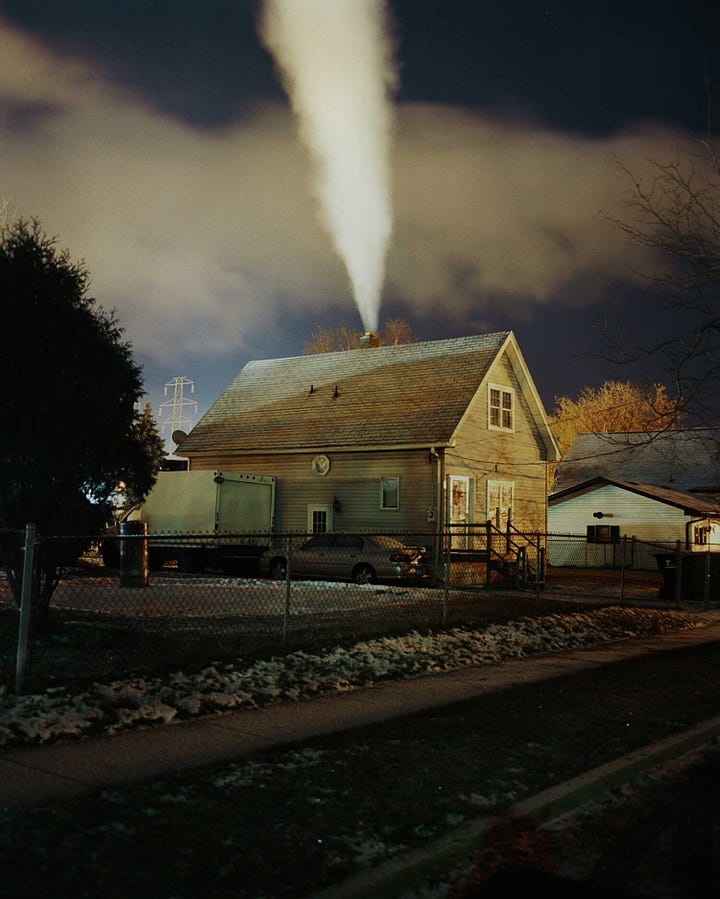

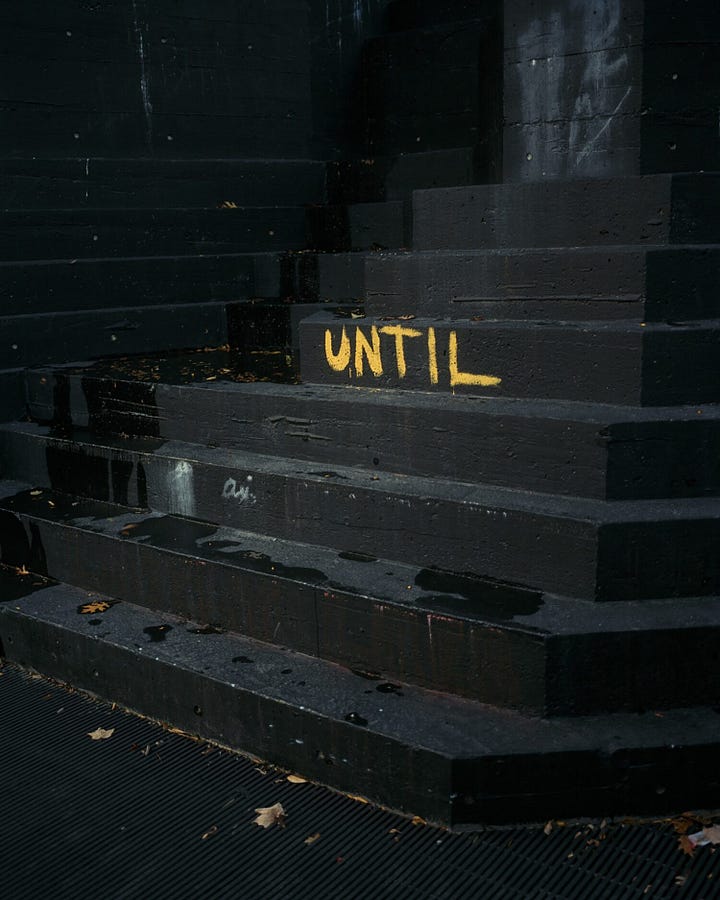

In King, Queen, Knave, photographer Gregory Halpern’s latest monograph, the Buffalo native conjures a dreamlike narrative that blurs the line between fact and fiction, leaving interpretation in the viewer’s hands. Threading together two decades of pictures that chronicle Buffalo’s people, places, and idiosyncratic moments, Halpern broadens his ongoing documentation of a place that has long had deep personal meaning to him.
One influence that Halpern returns to, citing his work in interviews and reflecting it in his own practice, is Milton Rogovin, the optometrist and persecuted leftist who turned to photography in the late 1950s as a way to document poor and disenfranchised populations in Buffalo, Appalachia, and elsewhere. Like Halpern, the late Rogovin was a Buffalo native whose photography, while lesser known than contemporaries like Walker Evans, helped to shape and define the social documentary tradition. But where Halpern’s color portraits and landscapes can take on an almost painterly quality, Rogovin’s predominantly black-and-white images telegraph a calcified urgency. His series on Buffalo’s storefront churches, published by Aperture in 1962, is the perfect example.
In this latest monograph, however, Halpern’s connection to a photographer like Rogovin feels distant. Shifting between dreamlike and contemplative, Halpern’s Buffalo is an otherworldly landscape where clapboard houses exhaust puffs of white smoke like locomotive engines and brilliant yellow wildflowers bloom against the aging infrastructure of the city’s industrial past. These images, while populated by symbols of decay and obsolescence, telegraph an introspective calm.
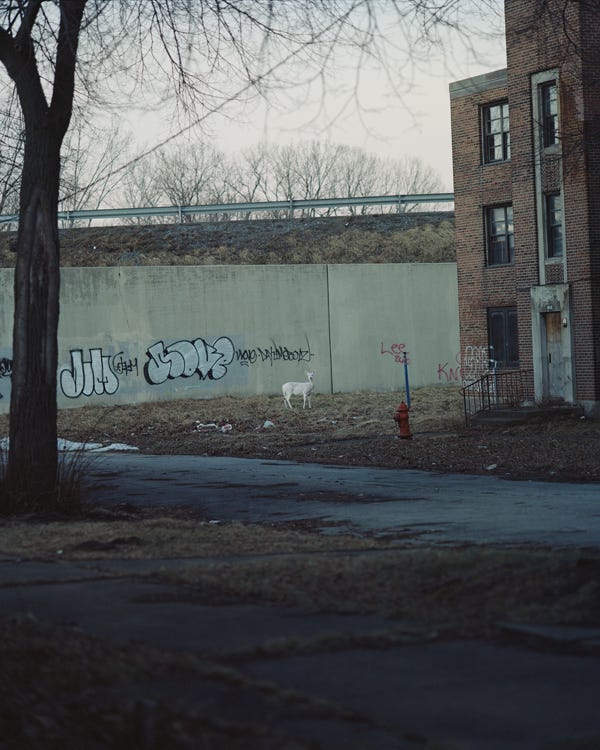
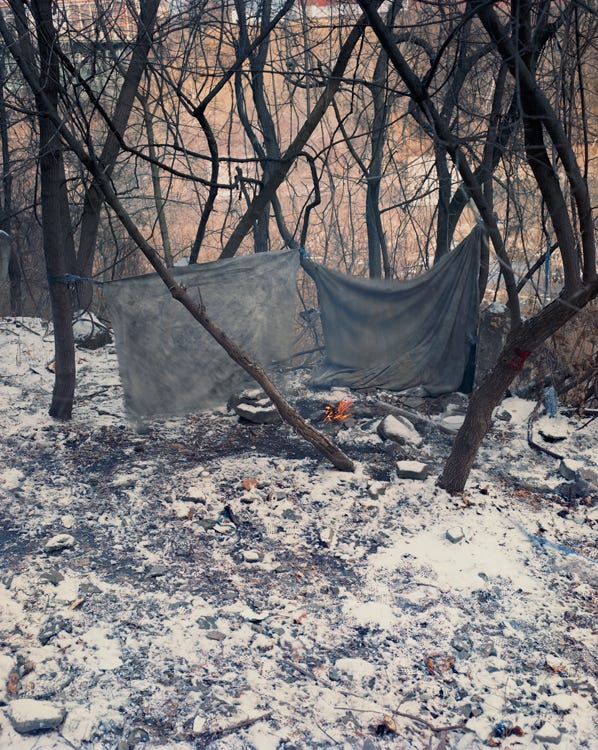
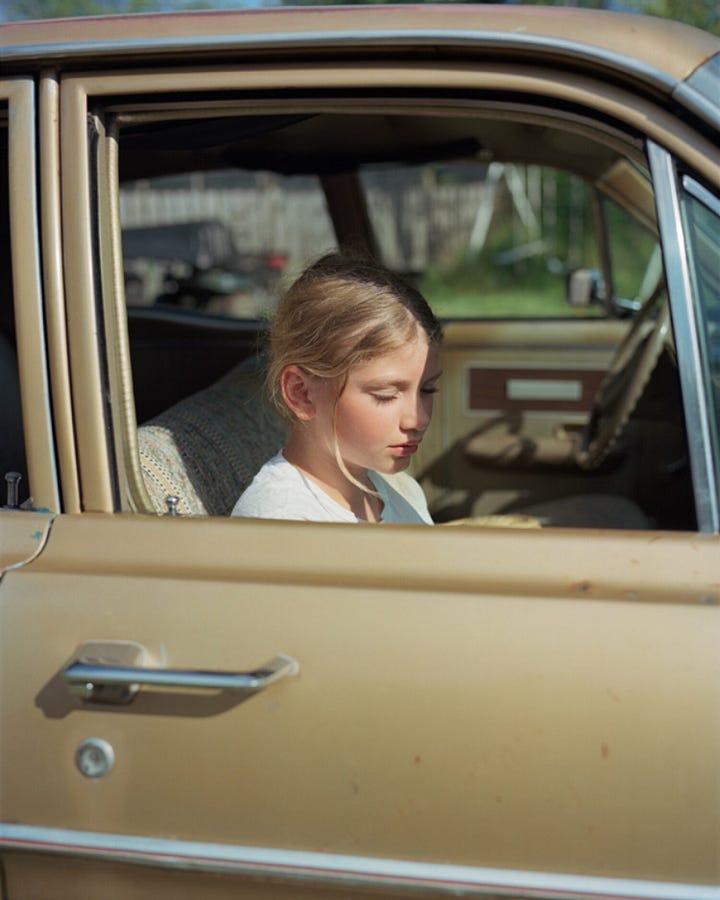
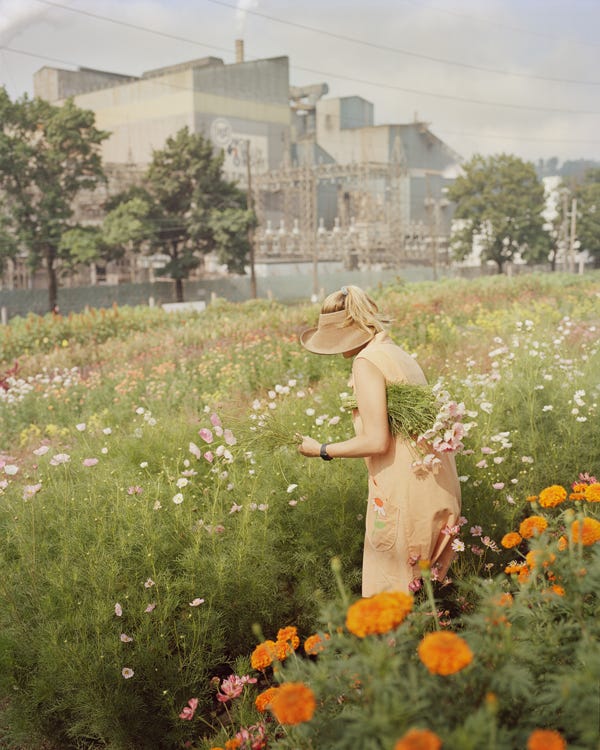
While Buffalo is the principle location of the photos included in King, Queen, Knave, other places make appearances. Most notably, a picture Halpern made in the town of Braddock, Pennsylvania, gave me pause. It shows a woman in a sundress standing in a field of flowers. Behind her in the near distance is the Edgar Thompson Works, Andrew Carnegie’s first steel mill.1 I pass by this steel mill and garden several times a month. But filtered through Halpern’s lens, this scene looked foreign, almost as if it were from a fairytale. This is perhaps his greatest gift as a photographer—infusing the ordinary with a sense of mystery.
In Halpern’s record of Buffalo, he also seems to be answering an unspoken question: What happens to a city that survives trauma? Factory closures. Jobs sent overseas. Economic collapse. Population loss. All symptoms that can kill a place. But like so many postindustrial cities—Pittsburgh to Cleveland, Detroit to Milwaukee—Buffalo’s fate is not what most would have predicted thirty years ago. It is, however, much like Halpern’s work, continually surprising.
Recommended Reading
“Halpern’s practice emerges from careful, extended observation of the world and a sensitive engagement with the people he photographs.”
—Phil Taylor, Associate Curator at The George Eastman Museum
Over two decades, Gregory Halpern has been photographing in and around his hometown of Buffalo, New York, meticulously crafting the series of photographs that forms his latest monograph. King, Queen, Knave is an idiosyncratic vision of a city amidst its contradictions, defying familiar narratives of post-industrial decline and embracing an enigmatic strain of reality verging on surrealism. Halpern’s mesmerizing sequence unfurls as a stage across which distinct and unpredictable characters appear in and amongst solitary buildings, snowdrifts, and sun-bleached scenes of everyday transcendence.
This mill, and the cancerous particulate matter it produces, is the same monolith that looms large in the photography of LaToya Ruby Frazier.





